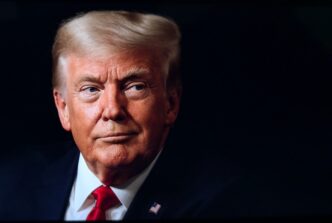Executive Summary
The Story So Far
Why This Matters
Who Thinks What?
Indian Prime Minister Narendra Modi has intensified calls for domestic production and consumption, urging businesses to embrace “Made in India” initiatives, as a 50% tariff rate imposed by President Donald Trump on Indian goods officially took effect on August 27. The tariffs are expected to significantly disrupt India’s export-driven industries. In response, Modi has promised a “massive tax bonanza” for ordinary citizens and small businesses, aiming to bolster the economy through substantial tax reforms.
Modi’s Call for Self-Reliance
During Independence Day celebrations from Delhi’s Red Fort, Prime Minister Modi made a rallying cry for self-reliance, urging small shop owners to display “Swadeshi” or “Made in India” boards. He emphasized that India should become self-reliant “not out of desperation, but out of pride,” citing a global rise in “economic selfishness.”
Modi has reiterated these comments in multiple public addresses, linking them to the need for India to navigate global economic challenges without external dependency. This message is widely seen as a direct counter to the economic pressure exerted by the new US tariffs.
Impact of US Tariffs
The 50% tariff rate imposed by President Trump is poised to affect millions of livelihoods across India’s export-oriented sectors. These industries supply a wide array of products, from textiles and diamonds to shrimp, to American consumers, and the new tariffs are expected to cause considerable disruption.
Government’s Fiscal Response
To mitigate the impact of the tariffs and stimulate the domestic economy, Prime Minister Modi’s government is pursuing significant fiscal measures. This follows a $12 billion income tax giveaway announced earlier in the year, which is set to take effect from April 2025.
The government is now aiming for a comprehensive overhaul of India’s indirect tax architecture, specifically a reduction and simplification of the Goods and Services Tax (GST).
GST Reforms and Economic Stimulus
Introduced eight years ago, GST was intended to streamline India’s complex system of indirect taxes, reduce compliance burdens, and lower the cost of doing business. However, experts have repeatedly called for its revamp due to its numerous thresholds and exemptions, which have made the system overly complicated.
The finance ministry has now proposed a simplified two-tier GST system, fulfilling Modi’s promise. Analysts from Jeffries, a US brokerage house, estimate that these GST reforms, potentially worth US$20 billion, combined with the income tax cuts, will provide a “meaningful push to consumption.”
Boosting Domestic Consumption
Private consumption is a cornerstone of India’s economy, accounting for nearly 60% of the country’s Gross Domestic Product (GDP). While rural spending has remained robust, urban demand has slowed due to factors such as lower wages and job cuts in key sectors like IT following the pandemic.
Investment banking firm Morgan Stanley projects that Modi’s “fiscal stimulus” will help ensure a consumption recovery, which in turn could boost GDP and temper inflation. This is considered particularly crucial given “headwinds from ongoing global geopolitical tensions and adverse global tariff-related developments.”
Sectors expected to benefit most from the tax breaks include consumer-facing industries such as scooters, small cars, garments, and construction materials like cement, which typically see increased demand around the Diwali festival.
Financial Implications and Market Reaction
Most analysts anticipate that the revenue loss from lower GST rates could be offset by surplus levy collections and higher-than-budgeted dividends from India’s central bank. Swiss investment bank UBS suggests that GST cuts will have a greater “multiplier effect” than previous corporate and income tax reductions, as they directly influence consumption at the point of purchase.
Further, Modi’s tax initiatives could increase the likelihood of additional interest rate reductions by India’s central bank, which has already cut rates by 1% in recent months. This, alongside an upcoming salary boost for half a million government employees, is expected to spur lending and help maintain India’s economic growth momentum.
India’s stock markets have responded positively to these announcements. Despite concerns over trade uncertainties, India also received a rare sovereign rating upgrade from S&P Global earlier this month, the first in 18 years. This upgrade is significant as it could reduce the government’s borrowing costs and attract more foreign investment.
Lingering Challenges
Despite these reforms and positive market signals, India’s growth prospects have moderated from the 8% levels observed a few years ago, and its external economic challenges persist. The diplomatic tensions between Delhi and Washington, particularly concerning India’s energy purchases from Russia, have intensified, leading to the cancellation of recent trade negotiations.
Experts note that the 50% tariffs on India are akin to a trade sanction between the world’s largest democracy and one of its fastest-growing economies, a scenario that was largely unforeseen just a few months prior.








